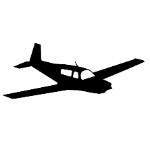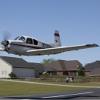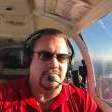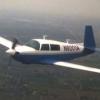Leaderboard
Popular Content
Showing content with the highest reputation on 11/25/2016 in all areas
-
9 points
-
4 points
-
This is last weeks flight to visit a family member in the hospital. Certain NJ Mailing List Mooniacs may recognize the quarry. Great fall flight. Unfortunately we just arrived into the dismal FIKI-party of Pittsburgh winters. Sent from my iPhone using Tapatalk4 points
-
These comments just struck me as odd; I'm unsure what your judgement is based on. From what I've seen and read around here a lot of MSers are passionate about their planes and spend plenty of time and money both maintaining and improving them. Many of our planes are 30-50 years old, and yes they require TLC but I can honestly state that my '78 J is no money pit. Many of us can't afford a newer plane or extensive panel upgrade but still we're flying safe, efficient, and airworthy aircraft. I'm a proud member of the CB club but that doesn't mean I cut a single corner with maintenance or safety. For me being a CB just means more money is left over for fuel (more trips and training). Sure, I've got a few cracks in the interior panels and the like but you won't find a single "inop" placard anywhere. I've seen several member's planes in similar fine condition. Sent from my iPad using Tapatalk3 points
-
Thank you for all the advice. Using the "modified" (magnetic tool) Clarence's technique did the job in less than 2 hours. My A&P didn't have the Rapco wrench and subscribes to Mooneymite's approach in combination with removing oil filter and using crowfoot. In the meantime I have to disagree with Mooneymite on this one. Only Girly-Man contort themselves - REAL men know a woman who knows where to get the correct tool.2 points
-
As much time as I spend on MS I don't know how I missed this thread I hope you have good news on the corrosion concerns and then things can start going back together. Good luck sir I love happy endings.2 points
-
Working well now... I was nervous using ATC before being IR... Best regards, -a-2 points
-
I was wondering if that was a MooneySpace member. Now I know! And a controller to boot. Started to watch it after Thanksgiving dinner but had to stop right after you air picked up your clearance. I wish we could do air pick-ups here easier.2 points
-
I often wondered if these airborne tests are as much as testing their ground based system as it is testing the stuff we install.2 points
-
It's hard to say from one pic but it looks to me like that lighter crescent-shaped area is the beginnings of valve failure. And regarding engine data review, I'm with you brother. I keep my 830 set on 2-second sampling and download after every flight. At least once a week I give the graphs a good going-over. Good job on the early catch! Sent from my iPad using Tapatalk2 points
-
2 points
-
Happened twice? Be sure you're keeping pressure up where it is supposed to be - my E is 30 psi all around but I think your J's nose tire get higher pressure - 45?. I suppose low pressure causes most flats. Second, don't skimp on the tubes. Michelin Airstops are favored by many here.2 points
-
Hi Ron ... happy holiday! Here’s an FAA AC that describes maintenance record keeping. You might be surprised to see that most of these records may be discarded when the work is repeated or superseded by other work, or 1 year after the work is performed. However, what’s legally required is not necessarily the best option. For instance, when selling the aircraft complete and continuos records are essential to maintaining value. You can digitize all of the logbooks and discard the paper versions as long as the digitized version contains the legible elements required in FARs. Some people will do that, and then keep only a current paper copies for the required time, digitizing those afterwards. Others have gone totally digital. So, if you choose not to digitize but rather cull out all the excess, follow the guidance in the AC and I think you will see that you can cut a lot out but still maintain the necessary continuity. Most would end with “best advice is just keep it all”. DVA2 points
-
So my motorhome ended up in the shop just prior to the weekend drastically changing our Thanksgiving plans. So instead of driving from Florida to Branson, Missouri, we packed up the Mooney and Flew to Montana to see both sets of parents. 1360 miles as planned, 11.5 hours in the air, day one we had 44 kts of head wind during parts of the trip, averaged about 22 kts head wind for the entire trip. We did it over two days stopping in Kansas to visit friends. The pictures are of Devils Tower in NE Wyoming and of my Father-in-laws farm on the edge of the Yellowstone River in SE Montana.2 points
-
1 point
-
Before I got married back in the 1970s I evaluated the options. After careful financial modeling I determined I wanted and could afford a mid 1950s model, not fancy but well-equipped with the basic features. I looked around at what was available, did careful pre-commitment inspections, ran financial, criminal and health record evaluations. When possible I made a test flight or two. (perhaps I should have used a pro but chose to do that myself) I created a matrix to compare the finalists and used a weighted scoring system to select the optimal candidate. Right... Over-analysis is a common sin observed here on Mooneyspace --these planes are all unique after 30-50 years and you have to quickly evaluate and place a deposit on a good one when it becomes available.1 point
-
What's the survival history been for companies who sell "lifetime" anythings? It seems like it is often an act of desperation by a company in need of short term cash flow. In the "pre-need" cemetery business it has long been necessary to legislate strict escrow rules to be sure that details like "perpetual care" are funded. Forever is a long time.1 point
-
Here’s a great value shot of the progress to damage. Note the margins where the heat profile changes up to the actual failure. Remember, that missing piece of metal had to go somewhere. It might have rattled around inside the cylinder for a bit destroying other stuff, or maybe it was pushed right out the exhaust and overboard before it did any damage. If this comes off in a turbocharged plant, you can virtually guarantee an immediate turbo failure. From an AOPA article a few years ago, here is a valve chart that could come in handy.1 point
-
I keep a fire resistant safe in my hangar with the log books and important papers. I am not worried about theft, so I keep it closed, but unlocked. This is a relatively old safe with a key lock mechanism, and the key is in the lock "just in case" I forget and accidentally lock it. Spare keys are on the hangar desk with labels. Not a perfect solution, as fire resistant is not fireproof. I keep thinking I should bring all my log books, 337 forms, STCs to a good copying firm (like those used in the legal profession), and have them put the data on several different media formats - CDs, thumb drives, and a spare external hard drive. Sent from my iPhone using Tapatalk1 point
-
Ironic to see this today.. I was surfing Youtube last night and came across this video. Watched and enjoyed.. Thanks. -Tom1 point
-
Im using this one: http://www.oasisscientific.com/vividia-va-400-rigid-usb-articulating-borescope-videoscope-inspection-camera.html Sent from my iPad using Tapatalk1 point
-
It's amazing how much bigger the cabin looks with the long rear windows. I've got to upgrade my F to the long Windows like that!1 point
-
1 point
-
I see the crescent moon artifact on one of the three pictures. He indicated they were pictures of the same valve done one month earlier than the graph. I see the crescent moon on one of the photos and not the rest. Are they different valve photos? Also, the pictures I posted were done as I was installing the new Tempest plugs and Kelly harness. They look very similar to his non-crescent moon photos. Just trying to understand what other physical indicators are there besides the crescent moon artifact. The crude he mentions is also seen on my seats as well.1 point
-
For Dev's question... TBO for the gov, no, I don't believe so... but, it is continuously in motion, the gear pump is continuously spinning and the The fly weights are in continuous sliding and spinning motion. The whole thing is bathed in oil, but wear is an on-going aging problem. Check your logs to see what care it has received... If it has several thousand hours already, getting a new one is in the expensive, but not killer expensive zone. In other words, expensive for a young buck, with kids and a house payment, not so bad for the mid stream guy who's kids are out of college... For the guy who wonders if the new prop came with an updated gov... no, you would remember the expense and would have asked 'is that necessary....?' If you just added a top prop to get the magic 310hp, you probably sent your gov out to have a spring replaced to provide the extra 200rpm and did something with your tach to move it's redline from 2500 to 2700... the regular gov fails to max rpm... my C's failed, it's gov got iran'd... the failure didn't go away. The real problem was the aluminum plug at the end of the shaft fell out letting oilP escape back to the sump. No pressure = high rpm... a Missile's Gov fails to low RPM. Great for glide ratio. Terrible for go around... So as long as the prop rpm is well controlled, there doesn't seem to be a reason to OH a perfectly good device. flying around with the prop on the high rpm stops is generally a bad idea. It is susceptable to rpm exceeding redline. Rpm will be controlled with MP. Of course , max MP will now exceed redline. Staying below redline, is not max MP. Now you don't know how much power you are producing, it is somewhere less than 100%. Read up on exceed rpm redline, how long and by how much. Exceed the limits is grounds for engine OH. It is that serious... Consult with Cody our prop guy for further details. Consult with your mechanic if you need to fly the plane with the prop stuck at high rpm... The prop stuck at low rpm might not get off the ground before you run out of runway. The ICP will be incredibly high. The chance of creating a worse engine problem has increased with this less than good idea... All PP ideas, not a mechanic. Seek professional advice... Best regards, -a-1 point
-
I think Mike and kids at Savvy would agree that it all depends on how fast (or slow or not) the valve rotates and how leaky the value is. Lots of variables affect that such as trueness of the value stem, carbon buildup, friction, luck, etc., Vibration has a mind of its own so don’t count on consistency with this type of diagnosis. And in the case of this engine, the failing exhaust value pattern is not consistent with each flight. On some flights there is oscillation, on others none, but if you look back in time on the EDM traces, there is a definite pattern to this cylinder’s exhaust profile. Also on this engine we see the exhaust temp on this cylinder running cooler and cooler on average over time - about 75dF. Then are flights where the temp moves around substantially for a few minutes then clears up, odd stuff like that was all pointing to a potential problem. Note you would not likely see these variations just by looking at the EDM in flight, you have to look at the traces to see this stuff early. Savvy Analysis makes it easy, but you can use the EDM manufactures’ visualization tools as well. Regardless, you should use something. Here are pics of the suspect value taken a month before the graph date: This next pic is a bit blurry, but you can see that the seat is pretty crummy: I’ll try to get up to date pics to see how much worse it has become. Here is the Good News... Catching this type of stuff early saves thousands of dollars in repair costs and maybe your ass as well.1 point
-
I've had to get SVFR clearances a few times lately and it was pretty straight forward. If KTYS is calling 4-5miles vis, you should expect 2-3 and just ask for SVFR clearance. The worst I have seen it the past month was 1.5mile vis on KTYS metar. As the post above noted, it's not a good idea to do it unless you have had lots of good practice on instruments..1 point
-
The rear battery box is positive vented with tube facing forward and a vent facing back. There is a seal on the lid. To get the back cotter pin in on the latch up against the rear firewall is a PITA. Good luck with the plane running and bouncing around. It may be time to replace the cotter pin with a tractor pin spring key thingy. But it is only a several times a year thing. If you killed your battery and wanted to charge it correctly, you would need lunch, dinner and probably breakfast. Had the line guys jump a 172 with the plug on the firewall. I was scared for them. It violates my rule of moving in front of the wing with the prop turning.1 point
-
The winds do make a tremendous difference. I departed Monroe County early last week on a morning with no wind. AWOS reported mile and a half visibility, but it was very deceptive... standing on the ramp it didn't look like a problem staying visual at all. However, as soon as I rotated I lost the horizon and didn't get it back until 4500 feet. Right before me a guy departed VFR, and 5-10 minutes later I heard him request a clearance from Knoxville. They sent him over to Flight watch. If you're going down there make sure you're current and capable.1 point
-
1 point
-
Here is a video of my F with all Whelen Orion LEDs. I don't have the LED landing light on. Sent from my iPad using Tapatalk1 point
-
Since the logs are attached to the value of the plane, store them someplace where your family can find them, after you have flown west for the final time, of course. If you have a big safe, that's where your family will go to find the important stuff. if somebody had to recreate the latest version of the logs, it may take tearing down the engine to acquire actual part numbers... Putting a number on that would be difficult, but it would costs 10s of AMUs. Generally, I use a filing cabinet and a book shelf for this kind of stuff. These documents are expensive to replace, but completely worthless to anyone looking to steal something. A fire proof safe makes some sense. The documents would cost a lot to replace. Insurance specifically would need to be reviewed for that. These are some PP thoughts, not a fireman, lawyer or document specialist. Best regards, -a-1 point
-
Adding onto that- Put on your computer(s) and on a USB in a safe. FYI- A cloud is not a cloud, its simply someone else's computer.1 point
-
Install the G5 while the GNS530W is in the airplane - get a logbook entry. Then do your slide-in self-install IFD540.1 point
-
Bob, That depends on the aircraft being refueled. C-130s are refueled lower and generally in a dive so the Herk is fast enough for the tanker. Additionally, if it is helos being refueled it will be low altitude. The fighters will be higher since they are much more efficient at high altitudes.1 point
-
It's pretty rare that they will be refueling at an altitude that matters to the average Mooney driver. From what I remember, we used to like refueling in the mid 20's.1 point
-
Just stop with the useless ALTRVs, file and fly and random refuel. You don't need an ALTRV. They're outdated and you don't follow the route anyway, cancelling the ALTRV as soon as you depart the filed route or altitudes. Most fighters and b2's are UHF, the controller should turn off the VHF transmitters when broadcasting to a UHF, most don't, so you'll usually hear one side of the convo. Military callsigns are easy to pick out. If you hear "death one one" or "honeybadger tree four" etc. Something like reach five five will be VHF.1 point
-
I have all my instrument students compute the numbers for this chart before starting any further training. Makes everything go smoother. 6 Configurations for plane.pdf1 point
-
Your name says it all--you should get an M20-C Ranger, with the (non-vernier) throttle quadrant, electric gear and electric flaps. I get 147-148 KTAS and usually 9 gph block time at 8000-10,000 msl and 2500. I back the throttle off just enough to make the MP needle move, which disengages the auto enrichment circuit in the carburetor, then lean to my desired ROP setting. At this altitude, I can safely run peak to 25° Rich1 point
-
Nope- that is forbidden by USAF and USN regulations if we are outside of a MOA. by military regulation, we have to fly IFR to the max extent practical, and we are held to the same IFR regulations as every other aircraft. We are allowed to proceed VFR if required by training, but unauthorized intercepts of unaware aircraft, and more specifically airliners (where we could unintentionally set off their TCAS) are prohibited. if you are flying in a MOA that has active fighters in it, though, you may be intercepted unintentionally (at least until the fighter pilot gains a visual tally); as they are possibly training against other aircraft in an air to air role- and your plane might be mistaken for "red air." If the fighter pilot sees you in a MOA, and identifies your aircraft- your safety as well as his/her own is their top priority... if an unsafe act were to occur; the ramifications would be dire to the military pilot (and they probably wouldn't be a military pilot much longer). Flight safety is not something taken lightly, and there is no room for unsafe behaviors and/or attitudes in our culture. Our job is dangerous enough as it is. what you might be seeing is an aircraft on a visual initial, or combat initial into the field. Most fighters talk exclusively on UHF frequencies, so you may not be hearing their conversations with ATC. I can't speak to helicopters. the question came up about transponders- when flying in the US, one fighter in the formation will always have a Mode 3/C transponder on. The fighter fleets are all in varying levels of modification to meet the 2020 ADSB requirements- we will all be required to have ADSB out... just like GA aircraft, and should show up on any ADSB traffic systems. The F-15C isn't ADSB out vetted yet (but it's in progress)- I can't speak to the F-16; which is the other fighter you might see intercept you (F-18's / F-22's don't perform ADS alert, and F-35's haven't been stood up for that mission yet). from a speed standpoint, unless I've got fuel to burn and a compelling reason to "go really fast", normally fighters fly a maximum range profile to and from the training airspace- that's about 320KIAS in the F-18 and F-15- so not really much different than most business jets. Of course, there are times where you'll see jets much faster than that- but over land we are restricted from supersonic flight unless in a dedicated training area.1 point
-
On my Instrument checkride, shooting the ILS into a Class C, there I was at 90 knots, Takeoff flaps and Gear down, putting down the glideslope when a Lear checked in behind me and was advised to "reduce speed 50 knots" due to traffic making 80 knots [Hey! That's me!]. I asked the DPE if I should be nice and speed up, he said "sure, let's see what you can do." So I cleaned up and my lowly C without speed brakes came down the glideslope at 130 mph until 3nm out, when I reduced power, eased in a little Up yoke, then when the ASI looked good added Takeoff Flaps then Gear Down for a nice touch and go, and took the Miss out to the VOR for a nice hold. Granted, there was additional yoke work and some trimming, but it wasn't anything major, and I didn't get more than a dot off of the glideslope. You got to have things in your Bag of Tricks . . . it makes life much nicer.1 point
-
1 point
-
This is Part 2 of Into the Wind - The Trip: Winter flying can be challenging with many decisions to be made, and this trip was to be no exception. First there was the big storm developing over the midwest, and then there was the storm coming in from the Pacific. First things first, though. Darkness was fast approaching as I left Willmar, and I wanted to get as far South as I could get before dark so as not to be faced with a large snow issue. I also needed a big FBO that could provide hangar space for the first night, since there is no way I wanted the plane out in the weather. I had learned my lesson years before with below freezing temperatures and “clear” skies. I had arrived in the morning to find the plane covered with frost. It took hours to defrost the plane at that time. So I chose Omaha, Nebraska as the stop. I really wanted Wichita, but it looked like I would have to cross the Front and arrive after dark. I wasn’t interested. So Omaha it was. I arrived before dark and chose Tac Air over Signature due to fuel prices and because I only saw jets in front of Signature. I asked for hangar space and they were able to provide it. I’m glad I didn’t ask for hangar price at the time. The most I had ever paid before was $55. When I paid my bill, it turned out to be a whopping $115/night! And was it ever worth it. Any thought of leaving Friday was quickly removed from my mind as Friday arrived with low ceilings and winds gusting to 49 knots. It was wild. The temperature drop was 30° from Thursday, so it was a wicked front. Temperatures were in the low 20s, and as politically crippled as California has become, I was reminded why I live there. I spent several hours Friday reviewing the weather options trying to figure out which way to go home; the Northern route through Wyoming, the mid route through Pueblo involving tackling the Rockies, or the Southern route through New Mexico. Saturday was looking good through the midwest down where I was (definitely not so in Minnesota), but the weather was quickly moving into California. The headwinds were looking to be terrible the whole way back. I was thankful to have my plane. I chose the mid route through Pueblo as looking promising. I figured on a little over 7 hours for the trip. It turned out to be 9½ hours with most of the tough decisions in the last hour and a half. I would pick up 2 hours on the trip home, but I was off the ground by 6:30am California time. The Pueblo leg was uneventful and even though I stayed low I still had 35 knot headwinds. After topping off at self serve in Pueblo ($3.98/gal) I climbed to 16,000 and took V244 to Milford, Utah. Headwinds were now up to 45 knots and I was seeing J speeds of 150 knots. The Rockies were beautiful and the ride was smooth. Around Montrose some rapidly changing numbers on the MVP-50 showed either a disconnected TIT probe or a failed TIT probe. Knowing engine power settings made that event uneventful for the remainder of the trip. Milford is the only reasonable stop midway between Pueblo and the West Coast, so after a quick stop I was off again on the last leg, a leg I knew was going to be a challenge. Having all the new electronics provides a comfort level unknown just a few years ago, and monitoring the flight against the plan keeps the tension to a minimum. Headwinds were now up to 51 knots and speeds at times were down to C172 speeds. The airlines were complaining about mountain waves and I saw them, too, with oscillations in speed in cycles between 120 knots and 170 knots. Additionally a Sigmet had popped up along my route of flight for moderate to severe turbulence below 14,000 feet. As I came up on it, I saw dust being blown North for miles and miles. The good news was that the winds were parallel to the Sierras. I cautiously went into the Sigmet area knowing that if things started to get rough, I would deviate South to Bakersfield that was reporting clear. I also saw the clouds associated with the Front moving into California. I left my Site Level in the hat rack and didn’t want to try to get it. It was probably better that way anyway. As the Sierras very slowly came closer, with the mountain waves causing the sight view to alternately raise and lower, I sometimes thought I would top the clouds and sometimes though I would not. By Mono Lake it became clear that I would not. I could see snow coming out the bottoms of the clouds. No way was I going onto the clouds with their associated ice and turbulence. I asked for and got clearance to FL200. By FL190 it was clear that I would top them. I asked for and got a block FL180 to FL200. Headwinds were now 61 knots, but the air was just light turbulence. I went over the Sierras at FL190. Now I started hearing reports of light rime between FL180 and 16,000, so I would wait to descend until into the Valley. Then there were reports of clear icing at 10,500 near Stockton. I was monitoring Nexrad and the sight picture ahead showed a deviation to the South was in order. First I picked Modesto and then El Nido Vor. ATC was accommodating to both. They gave me a PD descent to 8,000 feet as I was coming out of the Sierras and requested I report the freezing level. I was in the clear as I past it at 10,200 feet. They were even more accommodating when they gave me a vector to San Jose. At 8,000 feet I was in and out of moderate rain and IMC the whole way back, and was treated to delay vectoring while they got a couple of airliners in before me. I broke out at 2,000 feet and landed home 9½ hours flying time after a very long day. I am thankful for the Bravo. This trip could not have been made in one day in a less powerful airplane or one without turbocharging. Flightaware for N9148W shows the trip legs. The last one is the most interesting showing the importance of making that deviation to El Nido. What a day! I’m glad to be — home.1 point
-
Congratulations, Buttercup! Now get your check ride done, and no "June gloom" coastal overcast will ground you ever again! Sent from my iPhone using Tapatalk1 point
-
Not in a '66E. But there's not that much holding it up and if you haven't had the headliner down in years you probably ought to do it. In addition to replacing that cable you probably will put fresh tape on the whole vent plenum and confirm that the drain line from the vent is connected and not plugged up. Again, I'm familiar with a '66 and it's possible your '63 is different.1 point
-
My wife and I went from o69 to KCRQ and back today to visit family. 2h10m there and 2h35m returning. Doing this in a car is impossible! Doing this on a conventional airline would not be pleasant. Doing it in a Mooney - Wow!! Icing on the cake: for the first time my wife said she was really comfortable in the plane with a blanket she brought from home and that the blanket was staying in the plane. She also said "you woke me up on final and I was so comfortable". Wow!! (again). That blanket IS staying in the plane!!!!1 point



































